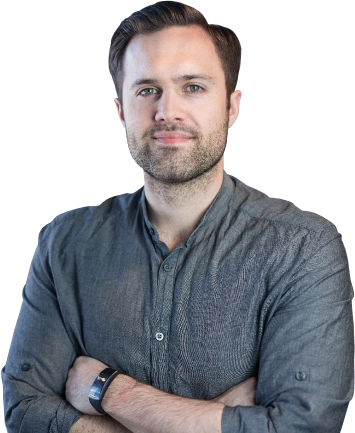AI-Powered Product Development Lifecycle
AI-Enhanced Software Development Process
From concept to market-ready software, our process integrates AI automation and agent-based systems for smarter delivery. At Mobile Reality, we blend agility, flexibility, and a sharp understanding of your vision with next-gen AI agent development. Our collaborative process ensures each project isn’t just a build—it’s a long-term partnership for innovation and success.
Product Discovery
At the heart of our process is the Product Discovery phase—where strategic AI thinking begins. Beyond traditional discovery, we assess opportunities for automation, intelligent workflows, and LLM-based agents. We identify pain points, explore user needs, and uncover where AI-driven tools can create unique value in your product roadmap.
Market Validation
Identifying the right problems is the first step. In this phase, we validate ideas using data and AI-powered feedback loops. Whether simulating agent behavior or testing automation pathways, we ensure your concept is viable, efficient, and aligned with what your users truly need. This validation stage builds the AI foundation for scalable innovation.
Delivery
With a validated solution, the Delivery phase activates agile development enhanced with AI automation. Our team builds your product using Scrum, Kanban, and smart agents that streamline testing, deployment, and optimization. From smart assistants to predictive features, each sprint embeds intelligence into the final software.
Maintenance
Your product's launch is the start of its evolution. Maintenance includes deploying learning agents to monitor performance, automate fixes, and suggest enhancements. AI-powered monitoring ensures fast resolution, greater uptime, and continuous improvements—making your product smarter over time.
Hand-off
A smooth hand-off includes fully documented AI logic, agent workflows, and automation rules. Our engineers ensure you understand the complete system—AI agents, APIs, and backends—so your team can scale or iterate as needed. We view the hand-off not as an exit, but a milestone in an ongoing collaboration.
The secret to successful delivery? Blending agile project management with AI-first thinking. We combine iterative processes with intelligent systems that adapt to changing needs, optimize resource allocation, and learn from usage patterns. Our hybrid approach ensures structure, speed, and innovation at every stage.
Our team guides you through every development stage, from idea to intelligent product. We promote continuous AI integration, agile feedback loops, and iterative improvements. With constant communication and aligned goals, we embed intelligent automation and agent-driven capabilities right into your development strategy.
Data analytics and intelligent automation are vital to our process. From machine learning models to autonomous agents, we use real-time data to inform product decisions. Predictive insights, simulations, and AI behavior analysis help us build smarter systems with each iteration—every decision, backed by insight.
Tech stack
In Mobile Reality we use JavaScript, top-notch and trusted technologies as React.JS, Node.JS, Vue.JS, React Native, AWS to deliver the high quality digital products. We also leverage advanced AI tools including OpenAI, Anthropic, LangChain, Langfuse, and Meta Llama to integrate intelligent automation and LLM capabilities into our solutions.
Time & Material
How does T&M work?
The contracted Mobile Reality's software developer or product team charges for the real work time. This form of cooperation allows implement agile development methods within software development processes. Very common way of cooperation in software industry, which requires constant flexibility and adjust to change in the modern world.When to choose time & material?
- You understand that specifications can alter even after a project has begun.
- You desire flexibility and the capacity to respond rapidly to shifting company technical requirements.
- There isn't a set spending limit for the entire project.
- You prefer to monitor and check the progress of consultants while they are working.
- In your IT department, agile processes and resource flexibility is something you value.
Mixed
How does T&M work?
The mixed model combines the FP and T&M. Clearly defined requirements are implemented based on the Fixed Price and requirements that were unknown at the start of the project are implemented based on the Time & Material price model.When to choose mixed model?
- You need the team working on full-time basis on the project on n T&M, but from time to time you would like to boost the development pipeline with additional scope and outsource it on fixed price basis.
- You value the day-to-day software development work in the project with full flexibility and an agile approach, but part of the system can be developed on a fixed price basis, like additional modules, new features released as MVP concepts to validate them on the market.
- It will be easier to control budgets processes and plans than with T&M as each sprint will be evaluated separately.
- Full awareness about successful development process, software design capabilities, deployment.
- When you expect rapid application development regarding core app system modules to beat competitor and some incremental development model with fixed price approach to validate new features in the market.
Fixed Price
How does T&M work?
Is a model that assumes stipulating beforehand a fixed price, as well as the scope and schedule of work. Usually it is similar to waterfall model. In Mobile Reality will allow some small level of flexibility during the software development process. The responsibility for the whole project lies on the external company’s side, on Mobile Reality's side.When to choose fixed price?
- You are fully aware of the project's preferred completion date and total work scope.
- You want to be certain that the money you spent will result in the desired result.
- Since you are concerned with the results, you don't have time to dive into analysis and planning and supervise the software design process or software testing of Mobile Reality's product team.
- Waterfall approach is more close to your values and needs.
- You are aware of what you want, but you would rather let experts handle the details.
Break the rules! Be Mobile!
Request a call today and get free consultation about your custom software solution with our specialists. First working demo just in 7 days from the project kick‑off.
Matt Sadowski
CEO of Mobile Reality
